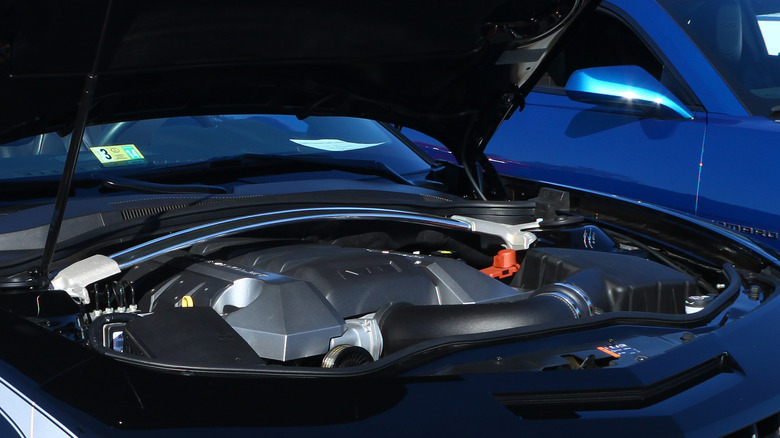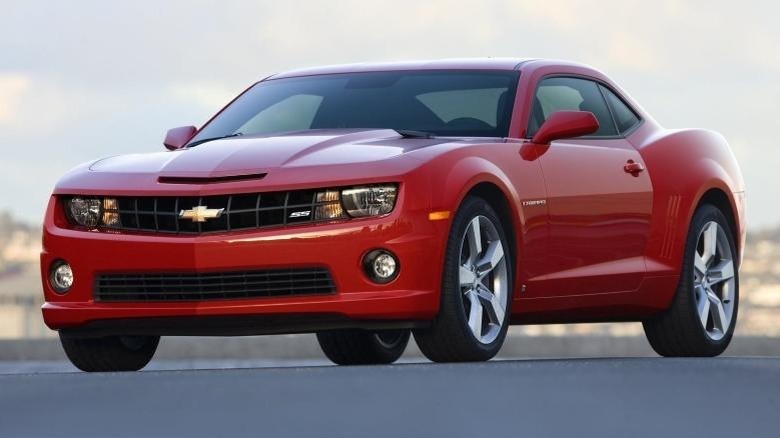Which Cars Have A L99 Engine Under The Hood And How Much Horsepower Does It Produce
The L99 joined GM's engine lineup in 2010 as part of the fourth generation of the company's Small Block V8 engine family. It features eight cylinders in a "V" configuration that sums up a displacement of 6.2 liters and produces a total output of 400 hp and 410 lb-ft of torque.
The 6.2-liter V8 shares its roots with the well-regarded LS3 engine found in the C6 Corvette, but was marginally dialed down by GM engineers to achieve better fuel economy. While the LS3 V8 runs all eight cylinders continuously, the L99 uses Active Fuel Management (AFM) technology to shut off four cylinders under light load conditions in order to improve fuel economy. Another difference with the LS3 is that the L99 runs on either regular gasoline or E85 ethanol, whereas the stock LS3 uses only gasoline. The 6.2-liter L99 V8 was used from the 2010 to 2015 model year, and had applications in automatic-equipped Chevrolet cars. Its compression ratio was 10.4:1 (compared to 10.7:1 for the LS3).
The L99 engine powered automatic-equipped 2010-15 Camaro SS models
As part of the Camaro's complete overhaul for the 2010 model year, Chevy selected the 6.2-liter L99 engine to provide motivation for Camaro SS models fitted with the six-speed automatic transmission. The engine would power automatic Camaro SS models through 2015 before being discontinued, generating 400 hp and 410 lb-ft of torque in that time. While respectable, that output makes the L99 slightly less powerful than the LS3 V8 found in manual-equipped 2010-15 Camaro SS models, as that engine puts out a gutsier 426 hp and 420 lb-ft of torque. Not to mention, the LS3 engine also helped catapult the 2010 Camaro SS into the ranks of the best Chevy Camaros ever made.
But what it lacks in performance, the L99 makes up in fuel efficiency (albeit marginally). In EPA testing, a 2010 Chevrolet Camaro with the 6.2-liter L99 V8 engine and automatic transmission gained 16 mpg in the city, 25 mpg on the highway, and 19 mpg combined. That highway return is 1 mpg better than the 24 mpg a Camaro SS model with the six-speed manual transmission managed to achieve. Otherwise, the fuel economy rating is the same for both engines, as an LS3-powered Camaro SS also earned 16 mpg in city driving situations, resulting in a combined city-highway rating of 19 mpg. The reason for the two fuel economy ratings being quite close is due to the fact that both the L99 and LS3 engines share a common design and make use of mostly similar parts.

